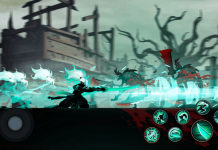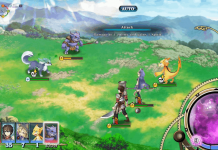It is a role-playing game played in the fictional Star Trek universe. The game was first published in 1982 and the second edition in 1983 by FASA Corporation. The first four designs proposed by L.Ross Babcook were rejected.
They were rejected because they focused mainly on combat which did not match the vision the company had for the game. Finally a freelance group managed to provide a workable design.
Based on a FASA game, Grav-Ball, Star Trek RPG was born with a tactical combat system and battles played on a square grid. It was published in a boxed set with books, two counter sheets and dice. Learn more about FASA Star Trek RPG next.

Setting
Star Trek RPG was set in the Star Trek Universe. This was before Star Trek the Next Generation. The player characters were assumed to be Starfleet members that are engaged in missions of space explorations.
They held senior pillars on a Starship bridge and went to alien planets for landing parties. Given the game’s structure simplicity, all the supplements can be reset easily to suit a certain era.
System
It is a skill-based system where character skills are based on time spent in previous service. The system was percentile based where players rolled a two-ten sided dice to get a random number ranging from 1 to 100.
Failure or success was determined either by rolling against a player’s own skill, a set difficulty task or a hybrid of both. However, this was adjusted according to circumstances.
For instance, assuming no modifiers, if a player rolled 33 and had a skill of 45, it was assumed to be a successful character in that action. In case there were tools to use in the task, the player might get a +25 bonus.
If the task was made more difficult due to conditions like a space battle, the player would be penalized with a -25.
The Planets
Each planet in the game’s atlas had a code which coupled with some luck and merchant skill to allow players to buy and sell across the galaxy. Also, a ship’s carrying capacity was based on volume as opposed to tonnage.
It is about how much a ship can hold. Rules on the Federation stock market trading are laid out in the rulebooks.
Character Generation
Just like most RPG games of its time, Players were asked to roll a dice to get the beginning character attributes. The characters begin with seven basic abilities.
They are Endurance, Strength, Dexterity, Luck, Charisma, Intellect and Psionic potential. As the game progresses, these attributes are adjusted according to the character’s species.
For instance, Vulcans got a natural bonus to the Psionic potential score which is their heightened psionic skill measure.
Also, players had an opportunity to virtually play any humanoid species that were first introduced in the original TV Star Trek series, first four movies or the animated series.
They included Andorians, Tellarites, Vulcans, Klingons and Romulans. Other two animated series of Edosians and Caitians could also be played.

Success
Star Trek RPG game’s success is mainly because of the simultaneous release of highly imaginative pewter gaming miniatures. These turned out to be very popular in their own right with their Task Force miniatures.
These garnered FASA a 1984 H.G. Wells Award in the category of “Best Vehicular Miniature Series”. This was followed by two other awards in the category of “Best Vehicular or Accessory Series” in 1985 and 1987.
However, in 1989 FASA’s contract with Paramount was terminated when it was in the manufacturing process of accompanying gaming miniatures.
Last Word
FASA’s Star Trek RPG game was released in 1982. Being a role-playing game, it was received with enthusiasm because it gave players a chance to be a part of their favorite outerspace world. The game remains popular to this day.







